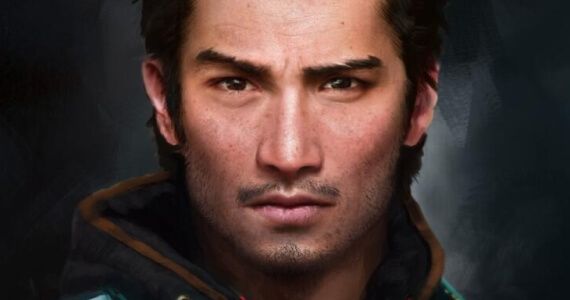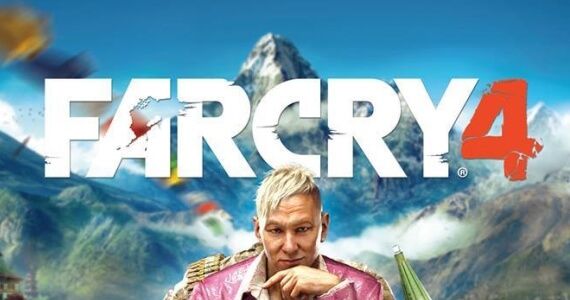There's a good reason why AAA video games tend to steer away from racially-charged issues; since the goal of Western developers is usually to sell their games to the widest audience - not offer commentary or opinions - most developers tend to play it safe. But if it wasn't clear already, the first official image of Far Cry 4's main character shows just how differently Ubisoft is approaching their adventure in the fictional country of Kyrat. But the culture and people of real-world Nepal have played a much larger role in shaping the game than fans will likely realize.
We've already pointed out the plague of 'Brown Haired White Guy' video game protagonists, and the makers of Far Cry 4 faced controversy when they first revealed the game's box art, depicting what many took to be a Caucasian man sitting atop the ruins of South Asian culture. We now know that the pictured figure is actually the villainous Pagan Min, a Hong Kong national subjecting the native people of Kyrat to the whims of his iron-fisted rule.
If that seems out of the ordinary, it's just the start; Far Cry 4 seeks to turn the empowerment fantasy of Far Cry 3 on its head. Rather than a white, Western male leading an exotic people to victory, players step into the role of Ajay Ghale, a native Kyrat returning home to help his neighbors revolt against the outsider Min.
Although Ghale was glimpsed during E3 2014, Ubisoft has now unveiled the first official image of the hero character. Take a look:
[HTML1]
People can argue whether it should have happened earlier, or more frequently (in both video games and film, for that matter), but a AAA developer and publisher crafting an entry in an established franchise that is set in South Asia, following the culture and inhabitants who live there, and casting the player in the role of one such resident is a notable decision.
When Kyrat was first revealed as the setting, the inspiration taken from the country of Nepal - from the Himalayan Mountains framing the game's cover, to the art style used in marketing material - was evident. Since then, the mountainous terrain and unique architecture have been the star of gameplay footage (along with some hot-tempered elephants) Speaking with Game Informer, executive producer Dan Hay explained that the gameplay ramifications of the setting were what first got the team's attention:
“When we started to talk about the place and the culture that we wanted to go next, there was a big push to go to a place that would use the wing suit property and give players verticality. We also wanted a variety of unique animals and a place with a unique culture and history, so we sent [narrative director Mark Thompson] on a trip to go live some of that. We absolutely wanted to pick a place where you could leverage all the toys we were going to put in the game.”
“The point of all our research was credibility... We’d been making these characters, but we needed to go out and come back to look at our project with fresh eyes. We had this sneaking feeling that the characters that we’d made didn’t feel real. A number of people on the team have all traveled around the world, and some of us have lived in crazy places, but we wanted to make sure that when someone plays the game they don’t feel like these people and places aren’t real."
As proof of just how easily the best intentions of AAA video game development can oft go awry, Thompson (and the few other designers who accompanied him on his trek to Nepal) received a rude awakening when seeing the culture they had sought to emulate up close. In the two weeks touring the country's remote corners and villages, Thompson explains, the group became immersed in the Nepali culture. Unfortunately, they also realized that their perception of the region had been a bit off the mark.
When the turn of the millennium saw Nepal embroiled in a civil war which pulled people from major cities to the most remote mountain settlements into the fold, a video game set in such a location seems straightforward enough. The setting might be different, but the implied action would be par for the franchise.
With past Far Cry games dropping players into unknown, exotic locales untouched by the West, speaking with the people that actually inhabit the unforgiving mountain regions of the country and impoverished corners of major cities, Thompson and his team had developed a vision that was far from accurate:
“It looked like a Disneyland version of Nepal... The biggest realization for me was just how much reach the western world had over there. I came back and looked at the game and said, ‘s***, we’ve made a 17th century version of Nepal.’ They have billboards everywhere of LG electronics and this Tuborg lager, which is like like the s****iest beer in the world. And Angry Birds — it’s just everywhere. It was almost guaranteed that one out of three people would be wearing a piece of Angry Birds merchandise."
Instead of cutting their losses and deciding to either detach Far Cry 4 from the real world, or simply change settings, Thompson and his traveling partners realized that while the actual people and culture they had encountered were more complicated than assumed, they were also more interesting. That means time was placed into making the game's characters and supporting cast embody the actual people who lived through the game's fiction, instead of telling a traditional civil war story.
The fusion of Eastern and Western influences is alive and well in Pagan Min alone, so hopefully the wealth of research will result in a stronger identity for the finished game. What are your hopes for Far Cry 4? Do you see Ubisoft's homework as an example more developers should follow? Sound off in the comments.
_____________________________________________________________
Far Cry 4 will be available for PC, Xbox 360, Xbox One, PS3 and PS4 on November 18, 2014.
Follow Andrew on Twitter @andrew_dyce.
Source: Twitter, Game Informer


